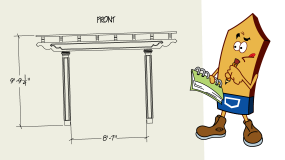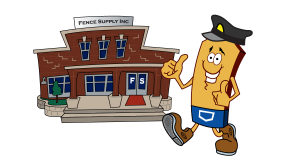When you’re planning on installing a new wood fence, make sure you think about how long it’s going to last. This mainly has to do with how long the wood that you’ve chosen is going to last, and how soon or long it’s going to be before the wood needs to be replaced.
Natural life of wood
The first thing you should know in estimating the life of your fence is the natural life of your wood. The most commonly used wood types for fences are cedar, spruce, and pine. Depending on the species, cedar may last for about 15-30 years, spruce may last for about 4-7 years, and pine may last for about 5-12 years.
Life of treated wood
Most treatment companies claim that when treated, most lumber will last more than 20 years. This holds true for pine and spruce, while cedar may last up to 40 years. Whatever money you spend on buying treated wood, you will more than make up for it in the long run.
Installation considerations
The biggest culprit when it comes to premature aging of fences is moisture. Be sure none of your fence panels or pickets touch the ground, where it will be in regular contact with a lot of moisture. But what about your posts? A fence is only as strong as its weakest link, and ground that is high in moisture reduces the life of a post by up to 3 years. Make sure your posts are stained or treated before you install them, and make sure you provide a concrete or gravel filler for your post holes to keep out moisture.
Maintenance
To get the maximum life out of your fence, you must regularly maintain it. Not maintaining a fence will take years off of its life. Make sure you stain and paint your fence, and reapply the stain every 2 years, or the paint every 4 years.
Now after you have considered all the factors listed above, take a look at the charts below to see how much proper installation and maintenance will make on your fence. The table below will show you how long your wood fence should last.
Cedar
|
Untreated |
Treated |
|||||||
| Timber life (years) |
15 – 30 |
25 – 40 |
||||||
| Is your fence properly installed? |
Yes +0 |
No -3 |
Yes +0 |
No -3 |
||||
| Is your fence properly maintained? |
Yes +2 |
No -2 |
Yes +0 |
No +0 |
Yes +2 |
No -2 |
Yes +0 |
No +0 |
| Minimum estimated life (years) |
17 |
13 |
12 |
12 |
27 |
23 |
22 |
22 |
| Maximum estimated life (years) |
32 |
28 |
27 |
27 |
42 |
38 |
37 |
37 |
Spruce
|
Untreated |
Treated |
|||||||
| Timber life (years) |
4 – 7 |
20 |
||||||
| Is your fence properly installed? |
Yes +0 |
No -3 |
Yes +0 |
No -3 |
||||
| Is your fence properly maintained? |
Yes +2 |
No -2 |
Yes +0 |
No +0 |
Yes +2 |
No -2 |
Yes +0 |
No +0 |
| Minimum estimated life (years) |
6 |
2 |
1 |
1 |
22 |
18 |
17 |
17 |
| Maximum estimated life (years) |
9 |
5 |
4 |
4 |
22 |
18 |
17 |
17 |
Pine
|
Untreated |
Treated |
|||||||
| Timber life (years) |
5 – 12 |
20 |
||||||
| Is your fence properly installed? |
Yes +0 |
No -3 |
Yes +0 |
No -3 |
||||
| Is your fence properly maintained? |
Yes +2 |
No -2 |
Yes +0 |
No +0 |
Yes +2 |
No -2 |
Yes +0 |
No +0 |
| Minimum estimated life (years) |
7 |
3 |
2 |
2 |
22 |
18 |
17 |
17 |
| Maximum estimated life (years) |
14 |
10 |
9 |
9 |
22 |
18 |
17 |
17 |

 Cedar Fence Options
Cedar Fence Options Western Red Cedar Fence Alternatives
Western Red Cedar Fence Alternatives Treated Pine Wood Fencing
Treated Pine Wood Fencing Spruce Wood Fencing (commonly referred to as SPF)
Spruce Wood Fencing (commonly referred to as SPF)

















